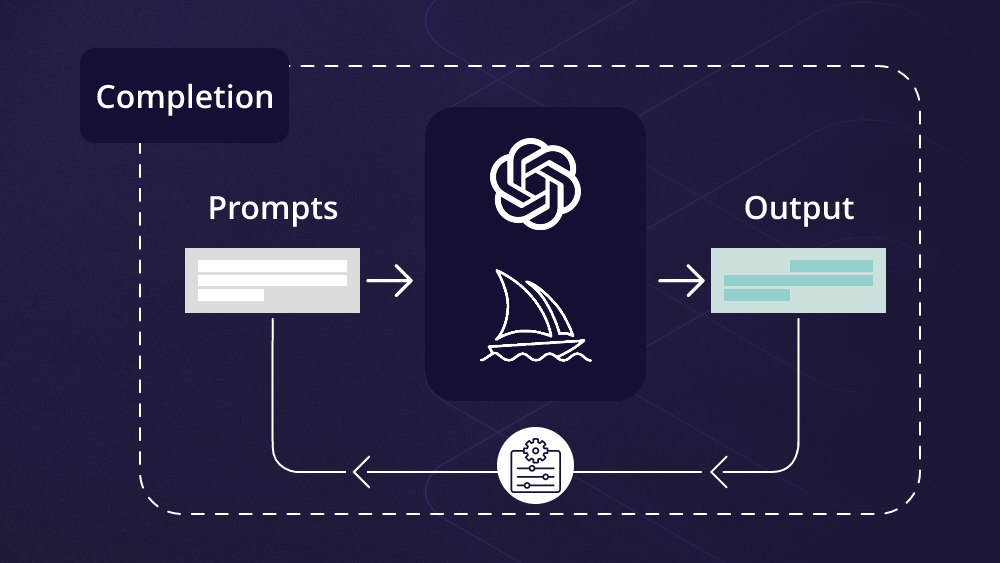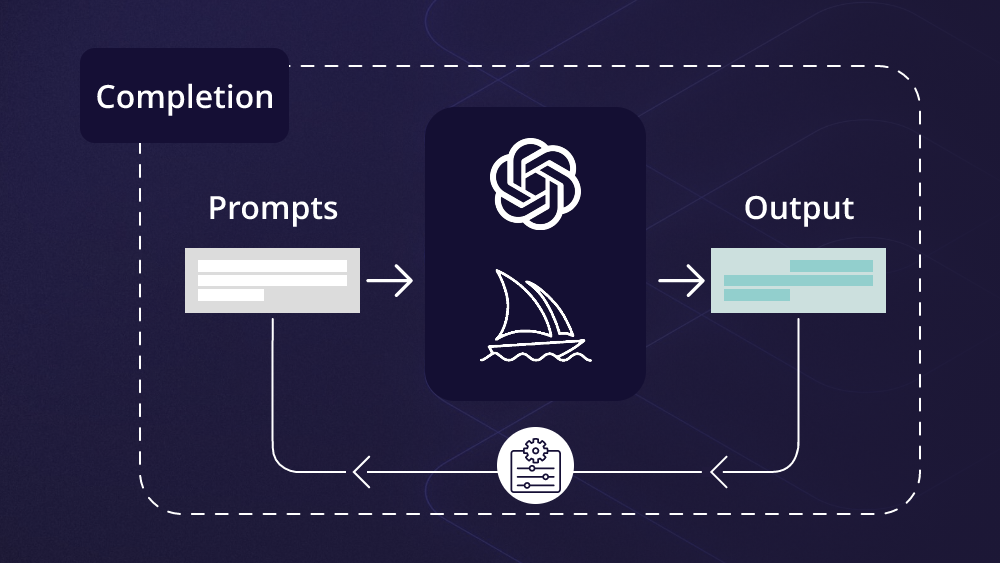Introduction
Since the introduction of ChatGPT in 2022, there has been a surge of interest in Generative AI, reshaping our interactions and perceptions of artificial intelligence.
Conversational AI tools like ChatGPT and Google Gemini have simplified the process—simply input a few prompts, and the AI model typically provides the requested information accurately. This raises the question: who are the professionals behind these remarkable AI models?
ML engineers, AI engineers, data scientists, and prompt engineers are constantly researching and innovating to enhance AI capabilities. Embarking on a career as a prompt engineer could be the next big opportunity, akin to the rise of software developers in the early 2000s.
Whether you’re already a data professional or AI enthusiast, this guide is tailored for you. We’ll provide detailed, step-by-step instructions on how to become a prompt engineer. Let’s get started!
What Does a Prompt Engineer Do?
A prompt engineer specialises in crafting precise and effective queries for AI models, such as ChatGPT. While anyone can interact with these models, prompt engineers understand how to formulate questions and prompts that yield accurate and relevant outcomes. They play a crucial role in ensuring that AI models generate the best possible results.
For example, if you need Python code for a login page, you might ask GPT directly, “Write a Python code to create a login page.”
However, a prompt engineer would phrase it more effectively, such as: “Imagine you are a Python developer explaining to a junior developer how to create a login page with input fields for username and password, along with a login button.” This nuanced approach is central to prompt engineering.
In addition to crafting prompts, prompt engineers also engage in various technical tasks related to large language models. They test and fine-tune AI models using different prompts, analyse model behaviour, identify patterns and biases, conduct A/B tests on output data, and refine prompts to enhance performance.
In essence, prompt engineers are instrumental in optimising AI prompt generation processes for specific applications, ensuring that AI models produce tailored and accurate responses.

How to learn Prompt Engineering skills in 2024
Becoming a prompt engineer is a smart career move, especially as Gen AI is one of the fastest-growing technologies, expecting a compounding annual growth rate of 20% for the next ten years. Here’s a deep dive on how to become an AI prompt engineer.
Learn the Fundamentals
1. Master Python
Prompt engineers would need a solid understanding of Python programming. Knowing how to code in Python allows you to learn NLP and deep learning models quickly.
As a prompt engineer, you may not build an entire language model by yourself. But some high-paying prompt engineering positions expect you to analyze the data generated by language models, and gain insights into it to make the model better. And when it comes to handling data, Python stands out.
Follow these steps to learn Python for prompt engineering:
- Learn syntax
- Explore NumPy, Pandas, Matplotlib, and Scikit-learn libraries
- Get hands-on with NLTK, spaCy, TextBlob, and other natural language libraries
- Practice data analysis
- Learn about machine learning models
- Practice Python coding
2. Understand the basics of AI
Begin your professional journey by familiarizing yourself with the technology you’re going to leverage. In this case, you should first understand what AI is and then explore its subfields. The basic idea behind artificial intelligence (AI) is quite fascinating – making machines behave intelligently and similarly to humans to perform specific tasks.
Machine learning, natural language processing, data science, deep learning, and many other subfields are part of this larger area of AI. First, have an overview of each of these technologies and know how they differ from each other.
3. Learn about NLP
Natural language processing is one of the hottest topics in AI at the moment. It lets computers read and interpret human languages. What’s even more is that it enables machines to generate human-like responses in natural language.
Plus, NLP helps you design triggering prompts that can shape an AI model to generate targeted outputs. So, as a prompt engineer, NLP is something you should master. Explore NLP libraries like NLTK, spaCy, and Transformers to get ready to handle language data.
You’ll want to start by mastering basic text processing and go deeper into techniques like tokenization, sentiment analysis, and text summarization.
ChatGPT, for instance, is fed on over 175 billion neurons. To understand what these neurons are and how they are fed, you should first know the idea of neural networks, the backbone of many deep learning algorithms.
Next, you might know that the ‘T’ in GPT stands for ‘Transformer’. The popular large language models are built on the Transformer architecture, including ChatGPT.
Transformer architectures use what’s known as an “attention mechanism” – a technique to improve model accuracy by focusing only on the relevant parts of the input data. Studying these architectures will help you craft effective prompts.

Develop Practical Skills Development to Become a Prompt Engineer
While you don’t necessarily need a degree to get into prompt engineering, you should have some practical experience in certain technical skills. Let’s explore the languages and techniques you need to excel in.
1. Hands-on with Pre-trained Models
Prompt engineers spend a considerable part of their time working with pre-trained models. In case you don’t know, pre-trained models are the base AI models that are extensively trained on tons of data. This is the very first step of building any large language model.
If you truly want to master prompt engineering, get familiar with existing pre-trained models such as GPT-2, GPT-3, BERT, and more. Input different prompts and study how they react. Understand their text generation capabilities and spot limitations.
Moreover, understand the parameters these models are trained on. At times, you’ll need to tune their hyperparameters to achieve specific results.
2. Fine-tuning for Custom Applications
Only a few companies can afford to train large language models from scratch. That’s why others bring you in as a prompt engineer, tasking you with fine-tuning the current pre-trained models for their custom applications.
For example, a pre-trained model may not be able to generate an HTML file according to your design requirements. But you can fine-tune it on UI and HTML-specific datasets to get desired outputs.
Overall, a prompt engineer should be able to fine-tune any pre-trained model for specific tasks. This can be done by feeding the pre-trained models with small and specific datasets.
Data preprocessing, hyperparameter tuning, and transfer learning are must-have skills to fine-tune a pre-trained model everything by yourself.
Remember, the depth of these technical skills varies based on the requirements of the position you’re applying for.
Usually, for entry-level roles, just NLP concepts and clever prompt crafting capabilities are enough to enter. However, a senior-level or high-paying gig might require more profound hands-on experience with NLP libraries, deep learning algorithms, and advanced prompting techniques.
Here are some of the comprehensive guides to help you learn fine-tuning:
An Introductory Guide to Fine-Tuning LLMs
Fine-tuning GPT-3 Using the OpenAI API and Python
Fine-tuning LLaMA 2: A Step-by-Step Guide to Customizing the Large Language Model
How to Fine Tune GPT 3.5: Unlocking AI’s Full Potential
FLAN-T5 Tutorial: Guide and Fine-Tuning
Prompt Engineering Techniques
Explore different prompting techniques and learn to be creative with your writing. Let’s see how you can be better at creating prompts.
3. Master Prompt Crafting
Language models produce results based on the inputs you give. If you can explain an AI model exactly what you want and tune it to produce desired outputs, that’s it; you can call yourself a prompt engineer.
Writing clear prompts and improving existing prompts are two of the main jobs of prompt engineers. They have to draft questions and sentences that can steer an AI model towards relevant responses.
For this, you have to be good at writing, and a tip to write better prompts is to include context and instructions in them. However, to become a master in prompt engineering, you’ll need to learn some advanced prompt engineering techniques, as we go through in the next section.
4. Advanced Prompting Techniques
We’ve already mentioned you to experiment with pre-trained models, and it’s a point that bears repeating. Use DALL-E, GPT-2, GPT-3, or BERT to practise different prompting techniques and see how they behave.
There are various strategies for model prompting such as zero-short prompting, one-shot prompting, iterative prompting, and many more. You can learn and practise these prompting techniques to become an exceptional prompt engineer.
To not miss out on anything, learn about LangChain. We’ve got a full guide covering LangChain for prompt engineers, but for a quick overview, LangChain is a framework for maximising the accuracy and relevance of the model outputs.

Career Advancement and Real-world Application
While having a degree in a relevant computer science or engineering field is a plus, it isn’t the only route. You can become a prompt engineer without a degree by completing certification courses, working on real-world projects, and continuous learning. Let’s delve into each step to shape your career in prompt engineering.
1. Real-world Projects and Portfolio Building
With a clear idea of AI technology and the skills above, you can start applying your new expertise to real-world projects. Whether you’re a working professional or a university student, volunteer for projects that need prompt engineering.
As you go, you can join in conversational AI and LLM-related competitions on Platforms like Kaggle to see where you stand among your peers. Remember, everything you do in this step can go into your portfolio, making your profile even stronger.
Having a professional portfolio is crucial at any stage of your career. Datacamp has an easy editing portfolio builder with beautiful pre-made templates. So, leverage this free portfolio builder to showcase your skills, experience, projects, and interests in an attractive way.
2. Keep Learning & Engage with the AI Community
Take online courses; there are a lot of prompt engineering courses that have been added recently. Certification courses not only help you acquire skills but also add evidence to your profile that you actually learned the technology.
It’s necessary to stay current with the latest trends, especially in booming tech like OpenAI’s Sora. There is no better way to stay updated than engaging with the right community. For this, follow top prompt engineering researchers and developers on sites like LinkedIn, Medium, and Twitter.

Conclusion
Now is the right time to get started with Gen AI. The world of tech companies is looking for prompt engineers more than ever to implement conversational AI in their businesses.
The path to becoming an AI prompt engineer is both rewarding and exciting. Anyone can become a prompt engineer with the right combination of the technical and non-technical skills mentioned throughout this article. Another way for them is to join atomcamp’s online bootcamp that offers hands-on and guided training.

